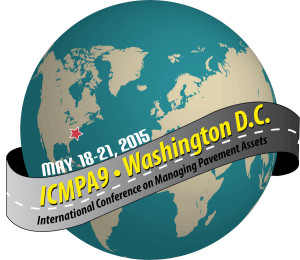Prepared by Judith Corley-Lay, North Carolina Department of Transportation (NCDOT)
The ICMPA9 conference was held in Alexandria, Virginia and included three concurrent sessions with 3 to 4 papers in each. The breakout sessions included topics on Innovation, performance curves, measurements and instrumentation, visualization, data quality, decision making, airports, local roads, public private partnerships, and many case studies. 338 attendees participated, including enough members of AFD10 to hold a mid-year meeting.
In this blog, I want to focus on the keynote addresses. Katie Zimmerman provided the perfect opening to the conference by describing the “story of pavement management” in chapters. Chapter 1 began with the AASHO road test and the early pavement management systems. Chapter 2 was marked with technological advances that led to today’s more advanced systems. We are living in Chapter 3, with significant improvements in technology (laser sensors, high definition imaging and greatly expanded computing capabilities) that have automated much of our data collection and processing. In the midst of this richness of technology, we face a reduction in funding and concern about the long-term viability of our systems. And of course, Chapter 4 is the future, with its challenges and opportunities. We are looking to a future where asset management and pavement management are essential to preserve or improve system conditions.
Dr. Sam Savage, author of “The Flaw of Averages” gave an invited lecture demonstrating the risk that is inherent if we base our decisions on average values. He showed some interesting Monte Carlo simulation capabilities available in Excel that can be used to better describe risk for pavement decision making. In many presentations after this presentation, authors would apologize for the use of “averages” in their papers, so Sam’s presentation successfully displayed the issue.
Andre Molenaar presented the final keynote address on Thursday afternoon and it was a fitting way to close the conference. His presentation focused on building in quality during design and construction so that asset performance is better controlled. He also tied building quality into the concept of sustainable pavements. Of particular interest was using construction demolition waste in base layers to minimize material sent to landfills. This concept is used in the Netherlands, where 95% of the construction demolition waste is recycled into road base and sub-base.
I will close with a few favorite quotes from the conference:
“Good judgement comes from bad experiences.”
“Perfect is the enemy of good.”
For more information, contact Judith Corley-Lay at: jlay@ncdot.gov
